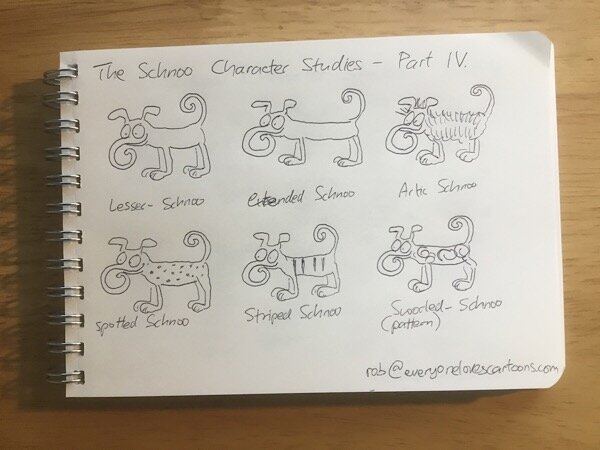Introducing the Galapagos Marine Cat
The world’s only coastal-dwelling feline, the Marine Cat shares rock space with the more commonly known Marine Iguana. The cat hunts for fish, aided by its webbed-toes and a large tail which it uses as a rudder. Marine biologist M.C. Splodd spent thirty years from 1919 - 1949 studying the swimming strokes of Marine Cats. He obviously had nothing better to do.
In this series, I look back over some of my cartoons and see how I can improve them.
I’m going to look at the following areas:
composition
colour
expression
writing
I'm sure I’ll think of some more points to cover as well.
Today’s picture is one I created a couple of years ago. This was drawn in Sketches, and this time around I will rework it in Procreate.
First of all I identified a few areas to work on
The cat blends in too much in the sea. I realise that in nature nearly all animals blend in with their environment, however, this doesn’t really help the clarity of the cartoon. So I want to add a darker sea background, and make the cat’s colouration a lot brighten so that it stands out.
There are also too many ares of white on the rocks. I need to make them darker so that there’s no white to catch the eye, and also to help the characters to stand out more.
The cartoon is about the cat, not the iguana. However, at the moment the Iguana is more brightly coloured and so the attention goes to it rather than the cat. It should be the other way around.
Both the cat and the Iguana would benefit from a bolder outline.
I can do a better job with the sea. While it is clear at the moment that that sea is depictured, I think I can make the sea a lot more interesting.
The horizon is too uneven.
Can I work a second gag into the picture?
To be continued in the next post!
I put out a Cartoon Newsletter with a whole host of characters as well as cartooning tips. Add your name and best email address to the orange box below and I’ll wing a copy your way.























































































